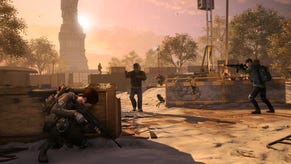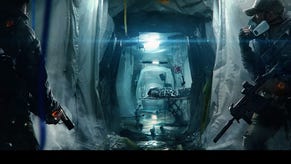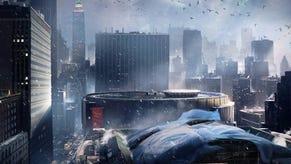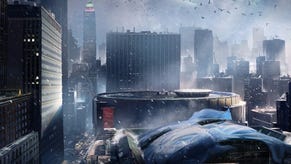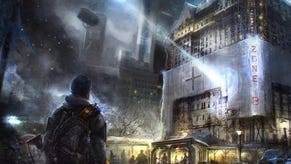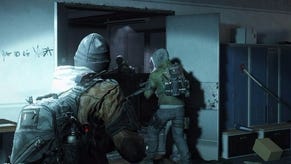Shedding light on The Division's mysterious dark zones
Yes, you can still close car doors.
We're venturing into the Dark Zone - the online PVP section of the map found in Tom Clancy's The Division - which will launch on 8th March 2016.
The Dark Zone was Ground Zero for the contamination event that ruined The Division's world, full of rows of bodybags still lying on the frozen roadside, patrolled by gangs of armed enemies.
But the biggest threat comes from other players. They're all there for the same reason you are - for the valuable loot left behind by evacuating soldiers when it became clear that the walled off Dark Zone had not stopped the spread of the game's fictional viral disease.
Find valuable loot and you will need to see it safely airlifted away via helicopter to be decontaminated. But calling in your precious cargo's airborne ride via a rather visible flare will also signal all other players in the area so they will know what you're up to.
If other players - or teams of players - can reach you in the minute and a half that it takes for your gear to be extracted then they can fight you for it. If successful they can win the loot and then attempt an extraction for themselves.
The fact that the game's best loot is hidden in these areas means that you will need to weigh up risk and reward when venturing in, Ubisoft hopes, and sometimes not succeed.
"We really wanted that moment of extra tension - it makes the loot valuable, extra special," executive producer Fred Rundqvist told Eurogamer. "So when you find it, maybe you have found an extraction point already, maybe you go find one. But when you activate it, you broadcast your location to all around. And then you have 90 seconds to ensure your escape."
The section we played was a narrow vertical slice of this mechanic, with one extraction point for three teams to fight over. We swept through the deserted, snowy streets past lines of abandoned vehicles - and yes, you do still automatically close car doors as you pass by them in cover.
We arrived at the extraction point with our loot around the same time as our rival teams, and no one chose the pacifist option of letting one team extract their packages. Instead, every player piled into a firefight - which causes neutral players and teams to be highlighted red as soon as you or they become aggressive to one other.
This was repetitive, despite the smooth combat. Different player classes see you armed with shotguns or assault rifles, grenades or portable turrets and more. But few people managed to pull off a full extraction without the game descending into anarchy.
But it is difficult to draw any definite conclusions of how the game will actually play in normal conditions due to the fact that this was just a narrow slice and, in the extraction mechanics at least, is pretty unrepresentative of the final game.
"The challenge was to compress hours of gameplay into an E3 experience," Rundqvist admitted. "Imagine an area many, many times bigger than what you saw today. You could walk that map for half an hour and not see anyone. We wanted to create something that was more action packed."
And of course there are still areas of the map outside of the Dark Zone - although you will still need an internet connection to play.
"Think of it as a typical MMO sort of structure," Rundqvist concluded. You can't log into the game if you're not online."
But what if the servers go down, or something breaks?
"I can assure you that is the number one precaution we're trying to take. I can't think of a worst situation than someone who has paid for the game not being able to play it. That's why we're testing it as much as possible before that date."
The Division is still looking like a strong online shooter candidate but despite our first hands-on time with the game it remains difficult to offer many meaningful conclusions.
Despite three E3 appearances we're now only just starting to get a glimpse at how the final game will play. Here's hoping that the next time we see the game it is much more than a thin vertical slice - enough that we can see how The Division's pieces really fit together.



